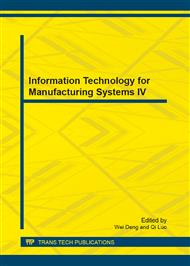p.16
p.23
p.29
p.34
p.40
p.46
p.50
p.56
p.62
The Kinematic Design of 2K Type Planetary Gear Reducers with High Reduction Ratio
Abstract:
3K type and 2K-2H type planetary gear trains can be designed to have high reduction ratios. Due to the reason of power circulation, these two kinds of planetary gear trains with high reduction ratios have low meshing efficiencies. The 2K type planetary gear reducer only contain two ring gears and one carrier, hence it will not have the problem of power circulation and will have better meshing efficiency than 3K type and 2K-2H type planetary gear reducers. Also, in general, the gear reducers with high reduction ratio are compound gear system. The purpose of this paper is to propose 2K type planetary simple gear reducers with high reduction ratios. Based on the concept of train value equation, the kinematic design of 2K type planetary gear trains with high reduction ratio are synthesized. Six 2K type planetary gear reducers are designed to illustrate the kinematic design process. Three of the examples are 2K type planetary gear reducers with simple planet gears. For the 2K type planetary simple gear reducer, there is a problem that is the simple planet gear engages to two ring gears with different tooth number. One example is used to illustrate how to design the two ring gears with different shift coefficient to engage the same planet gear. Based on the proposed process, all 2K type planetary simple gear reducers with high reduction ratios can be synthesized.
Info:
Periodical:
Pages:
40-45
Citation:
Online since:
September 2013
Authors:
Price:
Сopyright:
© 2013 Trans Tech Publications Ltd. All Rights Reserved
Share:
Citation:


